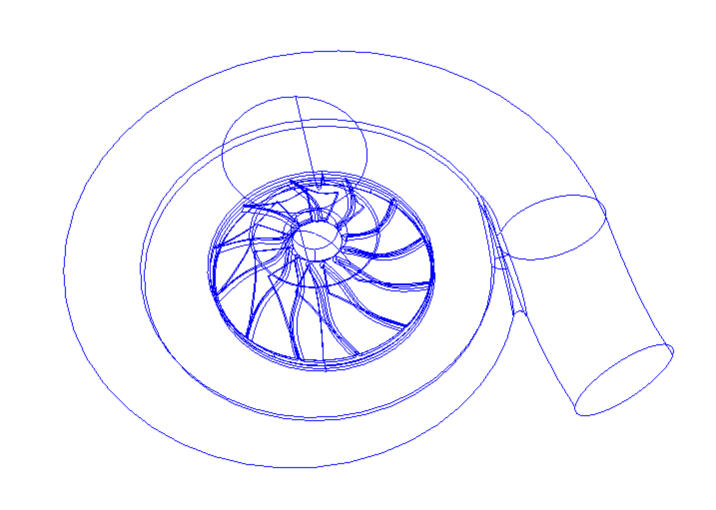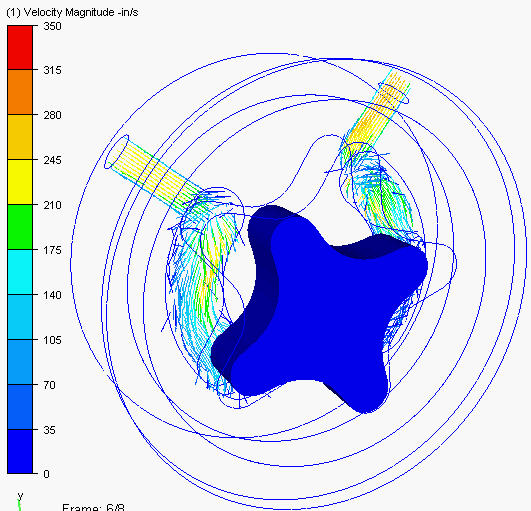Angular Motion
Angular motion is the rotation of an object about a centerline.
Examples of applications that use Angular Motion include:
- Positive displacement pumps
- Gear pumps
- Trichodal pumps
- Check valves
- Reed valves
Unlike the Rotating Region material device, objects with an angular motion can have paths that interfere--such as gear teeth in a gear pump or multiple mixing blades in an egg-beater.
Use the following guidelines to determine which method, angular motion or rotating region, you should use for your devices:
Turbomachinery devices (centrifugal, mixed-flow, and axial pumps and turbines) should be analyzed using Rotating Regions:
|
The impeller in this centrifugal compressor rotates, but does not touch any other solid object. It induces flow by transferring energy to the fluid (through a momentum transfer, in the classic turbomachinery sense.) Use a Rotating Region to define this motion. |

|
Assign Angular Motion to devices that move fluid (liquid or gas) using a volume displacement or that simply move through fluid. Conversely, surround a rotating device with a rotating region that moves fluid through an energy transfer. Such devices rely on the Coriolis effect and centripetal acceleration.
Rotating regions will produce a more accurate answer, and typically require less computational resources. Moving solids (specified angular motion) are more versatile, and can solve a wider variety of applications.
The following table lists several devices, and how the rotational motion should be specified:
| Pump | Rotating Region |
| Turbine | Rotating Region |
| Compressor | Rotating Region |
| Fan | Rotating Region |
| Blower | Rotating Region |
| Gear Pump | Angular Motion |
| Positive-Displacement Pump | Angular Motion |
| Cammed Lobes | Angular Motion |
| Egg-beater | Angular Motion |
| Check Valve | Angular Motion |
